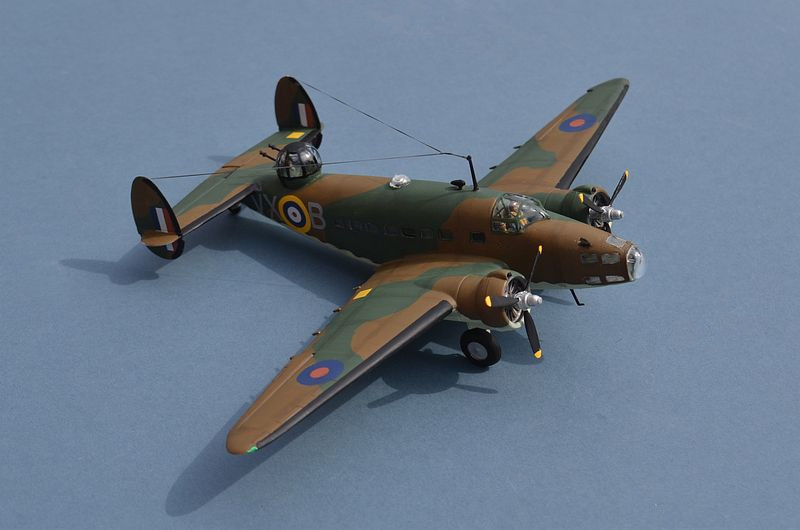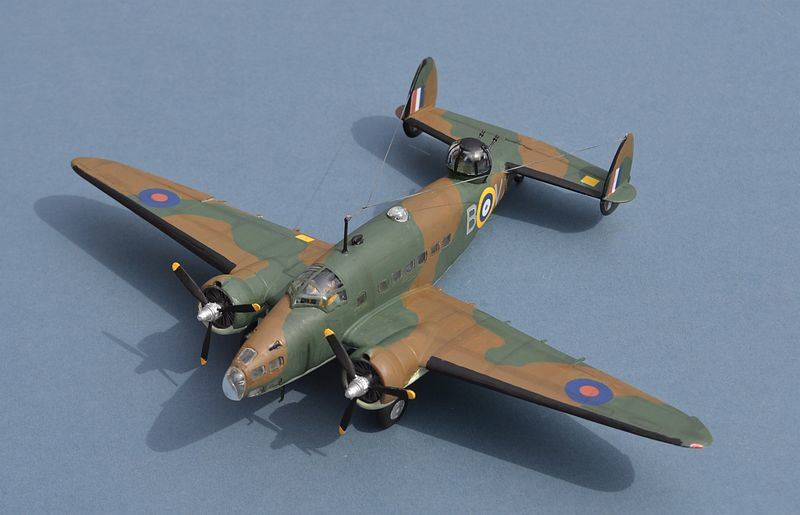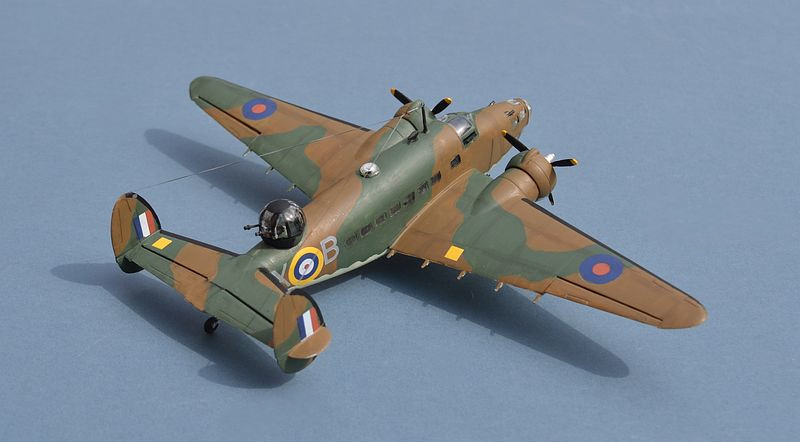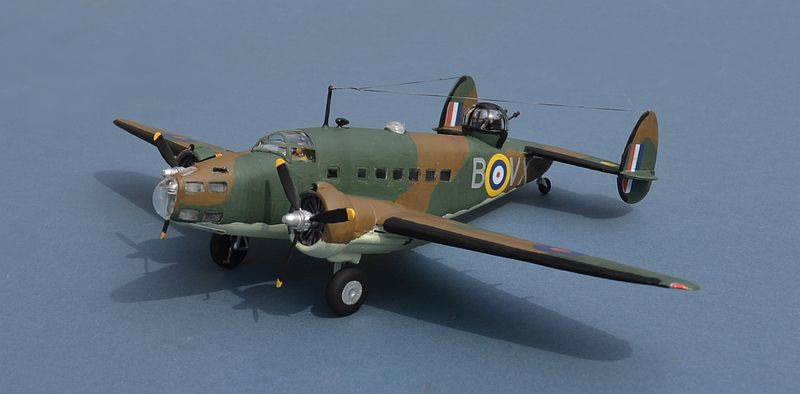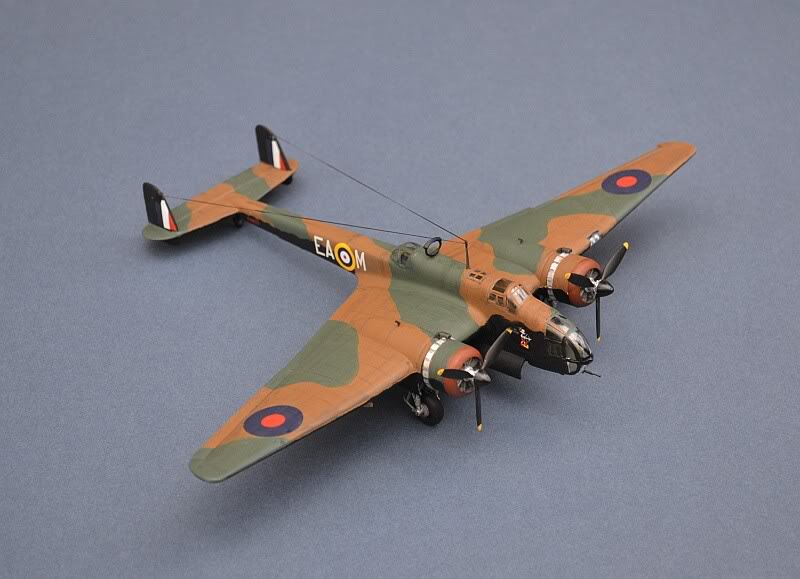
Another re-
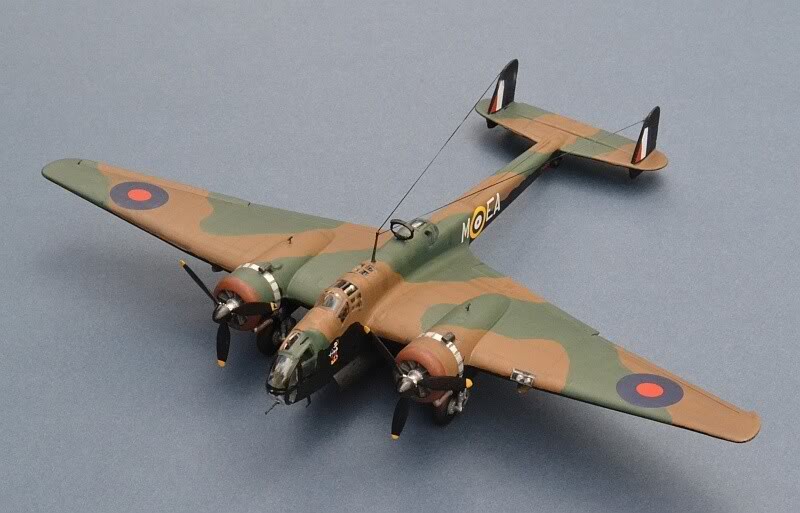
The HP52 Hampden medium bomber was designed to the same specification as the Whitley
and Wellington, but adopted a rather different design approach, placing the crew
in a very narrow forward pod and adopting a long slender boom to hold the tail assembly,
not unlike Dornier's "Flying Pencil" Do-
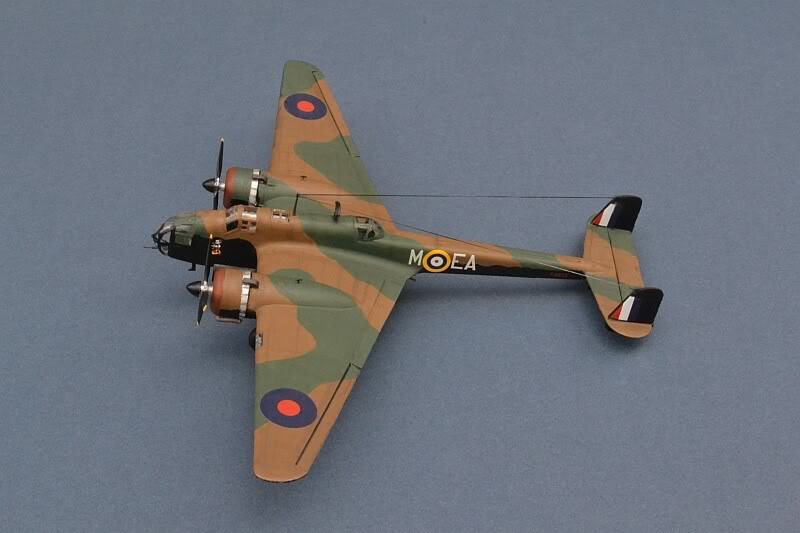
Hampdens quickly assumed the less risky night bombing role, including mine laying of German ports. Along with the Wellington, they bore the brunt of the RAF medium bombing effort during the early years of the war and participated in many of the early bombing raids on Germany, including raids on Berlin 70 years ago this month.
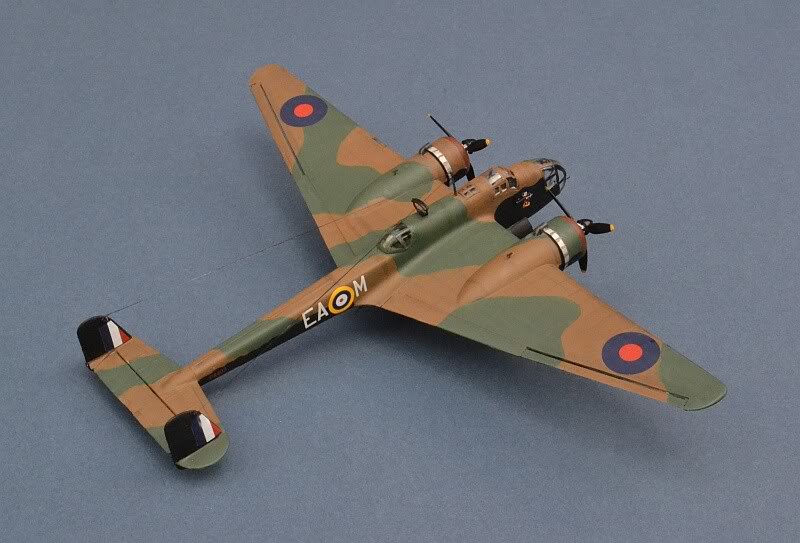
Later on, Hampdens were fitted with torpedoes and used very successfully by Coastal
Command and the Soviet Navy in anti-
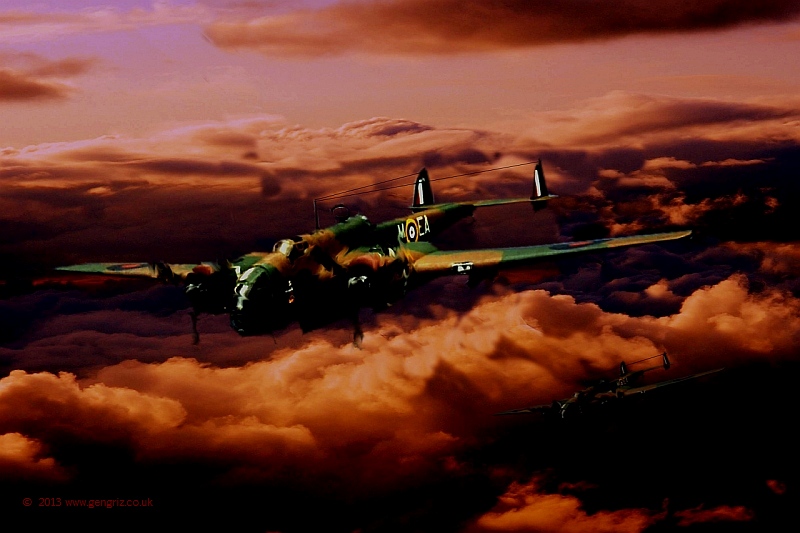
The old FROG Whitley is long past its best, but still conveys the brutalist lines
of this important ant-
First flying in 1936, the Whitley along with the Hampden and Wellington carried the
brunt of RAF heavy bomber activity during the early parts of WW2, including the first
RAF bombing raids on German territory. An awkward looking aircraft with a strange
nose-

Whitleys were allocated to the night bombing role from the start and thus never experienced
the dreadful casualties seen by their peers. This, combined with docile and reliable
handing, resulted in the aircraft gaining a very popular reputation with RAF crews;
in addition it meant that there were always plenty of Whitleys around, allowing it
to be converted for many other tasks. By 1942, fitted with anti ship radar in its
comparatively roomy fuselage, additional fuel tanks in the bomb bay and carrying
an extra crew member for extended patrols, long range Whitley Mk VIIs were in wide
service with Coastal Command, achieving their first U-
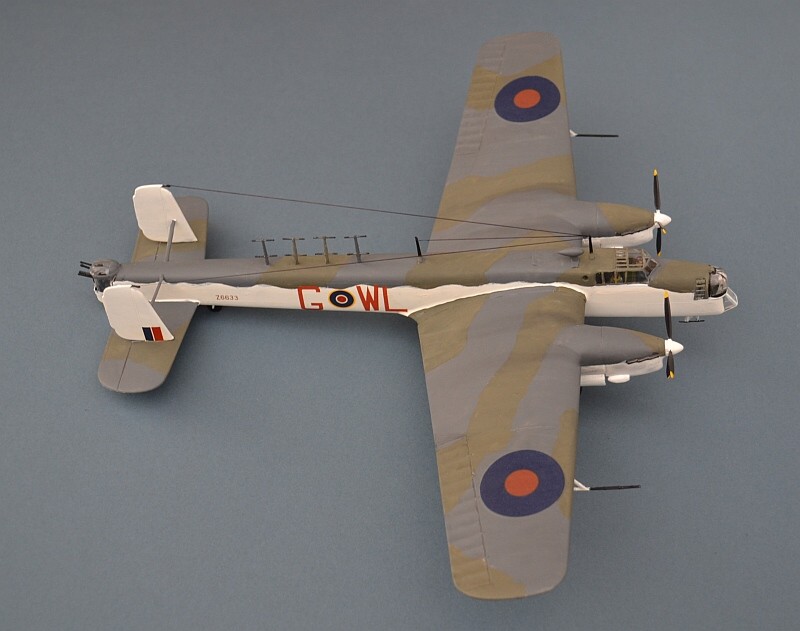
Although production of the Whitley ceased in June 1943, a great many Whitleys remained
in service with special operations and airborne forces squadrons right up to the
end of the war, conducting covert and clandestine insertions of troops and agents
by parachute into occupied Europe. The Fleet Air Arm also operated a number of Whitleys
as a multi-
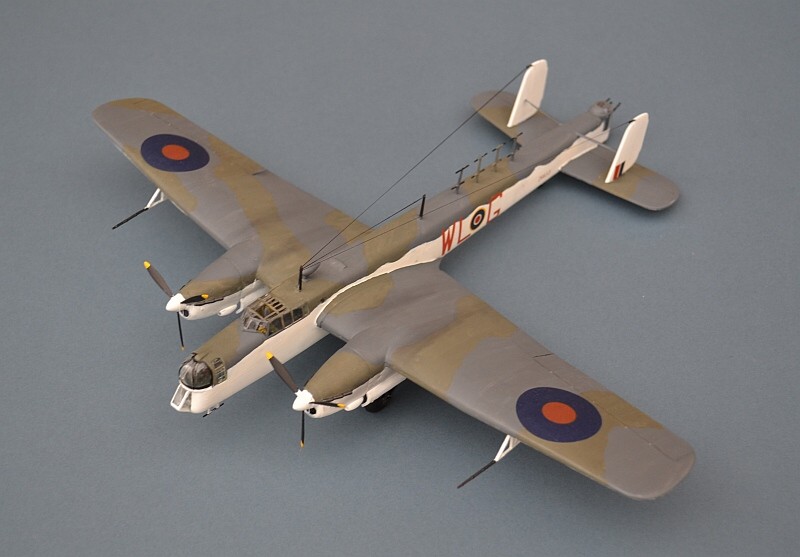
612 Sqn RAF operated the Whitley on Anti-
The Airfix Catalina amphibian is a fairly old kit, which doesn't really match up to today's standards. Its a fun build though, especially with all those working features!
The Catalina is perhaps the most successful seaplane ever built and played a key
role in the Battle of the Atlantic, attacking surfaced U-
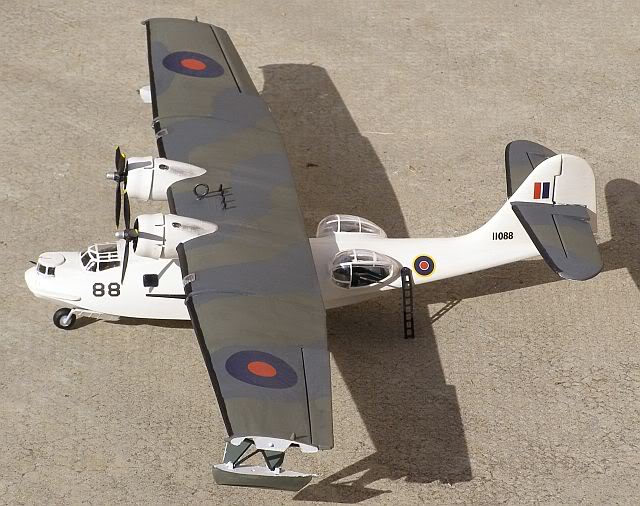
Scottish RAF Catalina pilot, Flying Officer John Cruickshank of 210 Sqn RAF, was awarded the Victoria Cross, one of four VCs awarded to Coastal Command during WW2:
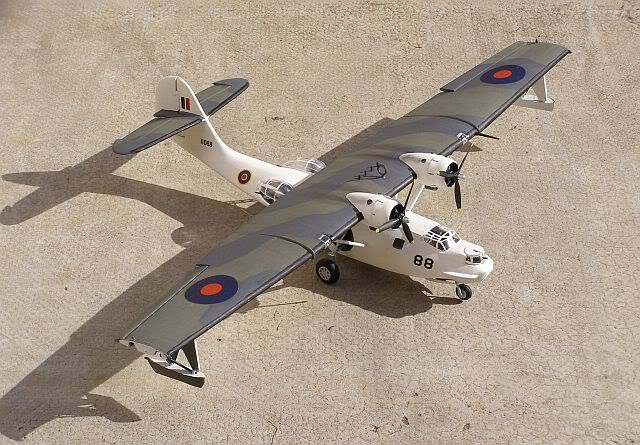
On 17 July/18 July 1944 Flying Officer Cruickshank, on anti-
In 2013 John Cruickshank was guest of honour at the RAF Benevolent Funds celebration of the 70th Anniversary of the Battle of the Atlantic. He is the last surviving recipient of the VC for air action in World War II.

On 7 May 1945, a Catalina of No.210 squadron RAF (formed as Naval 10 Sqn, RNAS) sank
the 196th and last U-
Martin A-
Western Desert Air Force, November 1942.
Frog 1/72: first issued in 1963, the kit is very basic, representing (I think) the later Mk IV variant. Parts fit is variable; the wings and fuselage fitted very well, but the wing and tailplane to fuselage joints were very bad. Panel lines are lightly raised, but the transparencies are thick and not particularly clear, even after dipping in Klear. My kit had no transfers with it, so these are some generic ones from my spares box. Link to Build Page
The Baltmore was a highly successful development of Martin's earlier Maryland light bomber, with a larger fuselage and other improvements produced at the request of the French and the RAF.
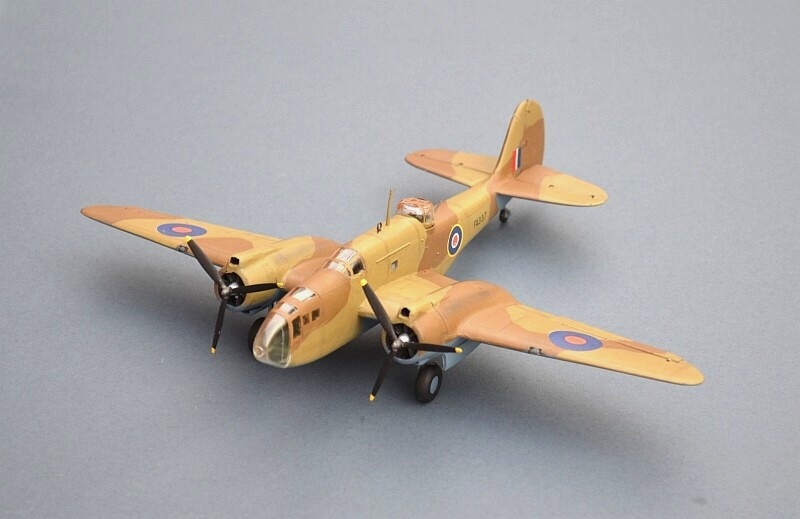
The aircraft served in significant numbers with RAF and Commonwealth squadrons (Australian & SAAF) in North Africa and the Mediterranean, as the light bomber backbone of the Desert Air Force. Its narrow and deep fuselage, reminiscent of the Hampden, was not an ideal layout, severely limiting the ability of the crew to move around the aircraft, but its high speed, agility and reasonable bomb load were a welcome addition to the Allied air forces.
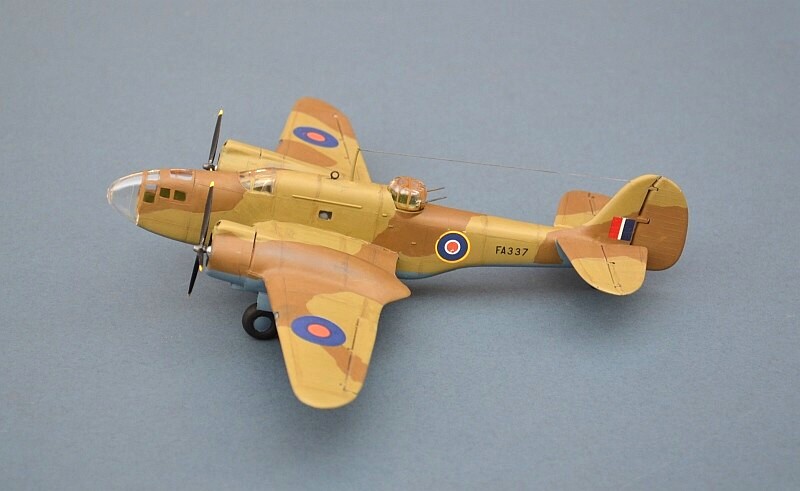
The Mark IIIa was the first Baltimore variant supplied as Lend-
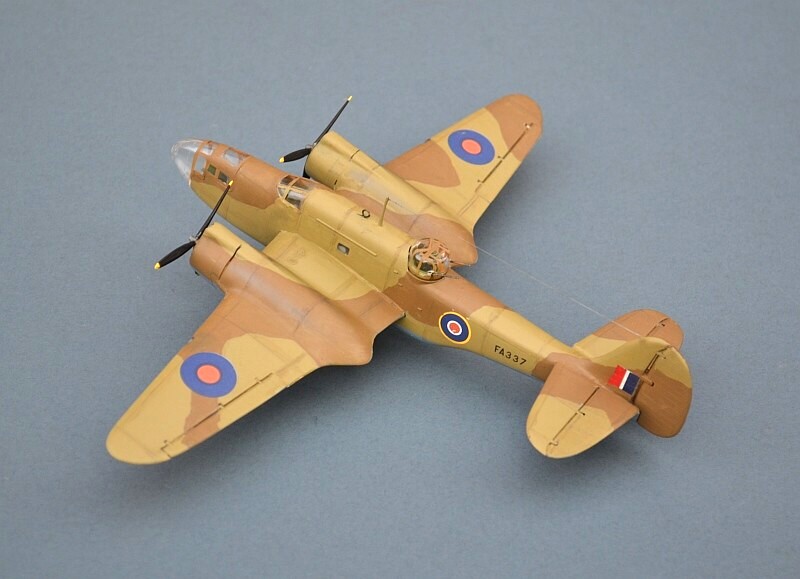
After WW2, the robust and lightweight Baltimore saw further service as a high speed research aircraft with the US Navy, capable of Mach 0.74 in a dive.
The ancient Frog kit of the Master remains available from various Eastern European sources. Although lacking in details (for example in its entirely bare cockpit), in its original Frog issue it is a nicely engineered kit and a worthy representation of this key WW2 Trainer.
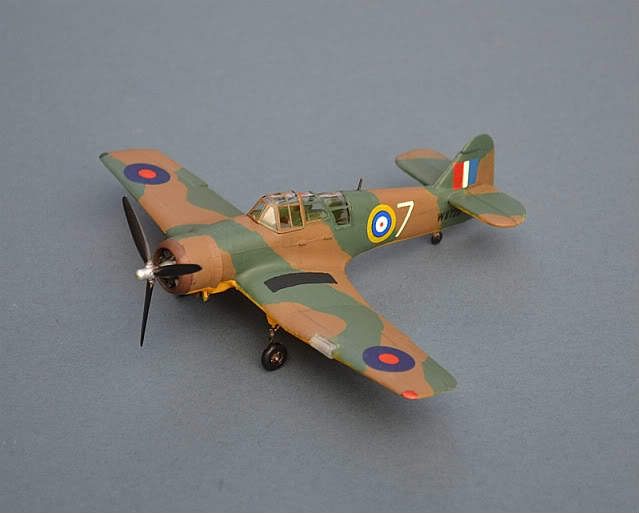
The Miles Master was one of the most important British fighter trainers of WW2. Over
3,000 were built by Phillips & Powis Aircraft Ltd at Woodley in Berkshire. Originally
powered by an in-
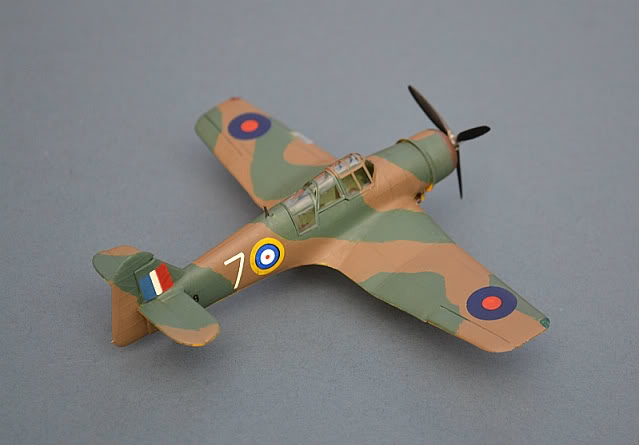
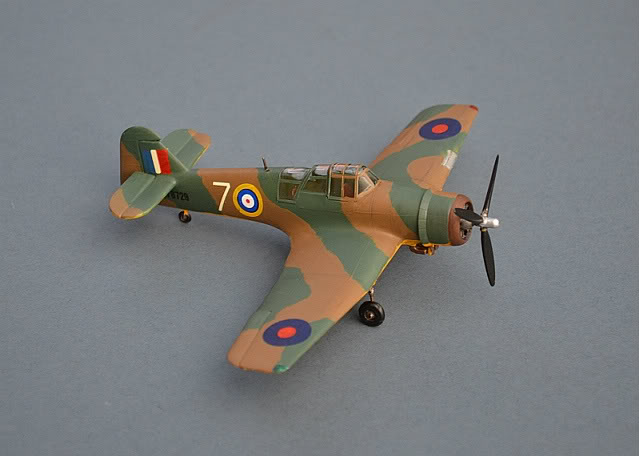
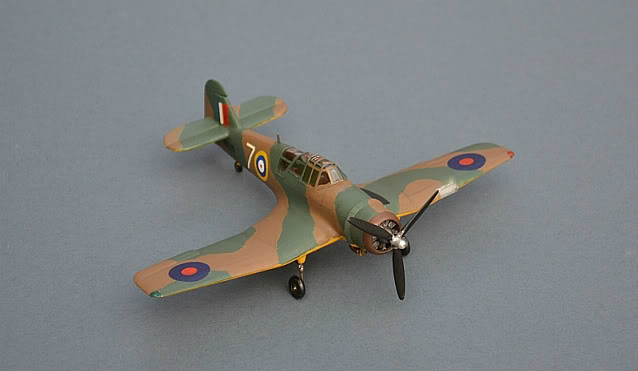
Friends & Allies
Bombers & Trainers of the Royal Air Force (1918-
Including Commonwealth Air Forces
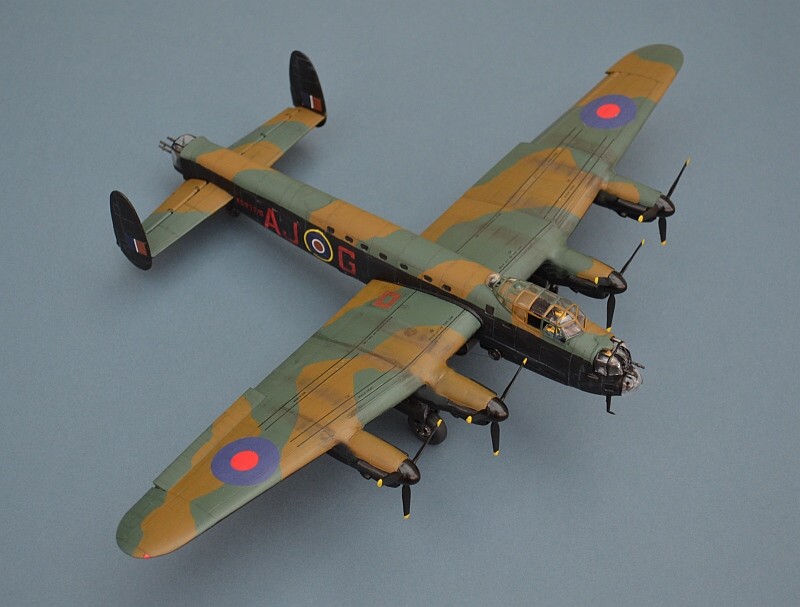
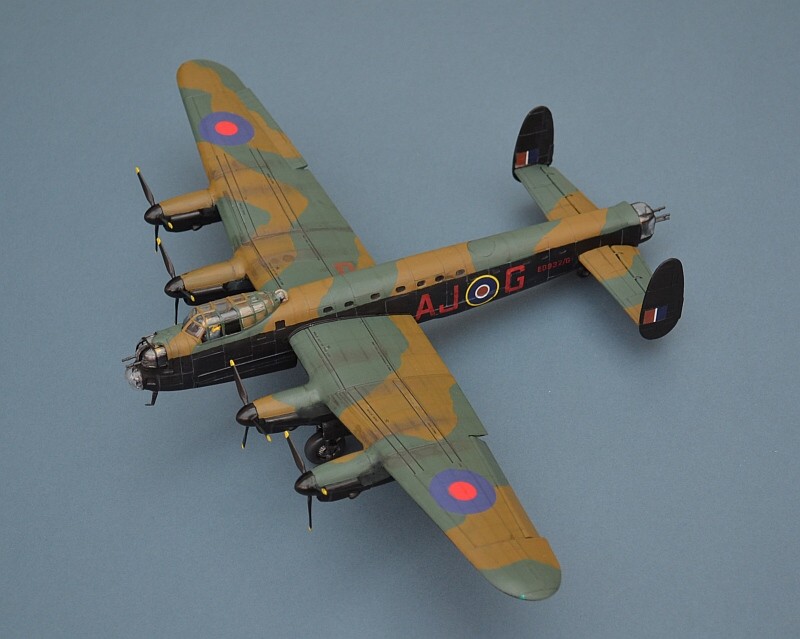
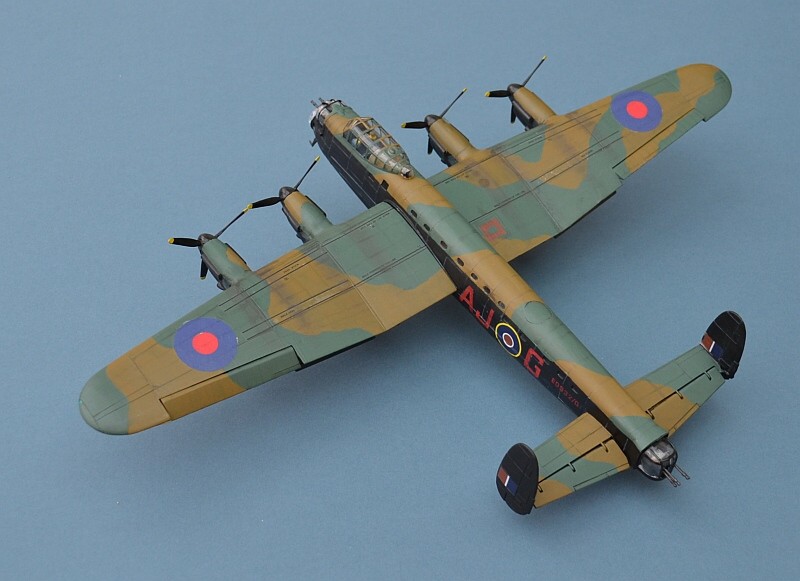
617 Sqn Royal Air Force "The Dambusters" RAF Scampton, 16/17 May 1943
This is the ancient Revell GB Dambusters kit from the 1960s. Not really up to modern standards, but still great fun to build. Link to Build Page
Entering service in 1942, the Avro Lancaster quickly became the mainstay of the RAF heavy bomber force. Powered by 4 Rolls Royce Merlin engines, it was reliable, handled well and could carry a significant bomb load in its long unobstructed bomb bay.
On the evening of 16th May 1943, specially modified Lancasters of 617 Sqn RAF undertook a daring and skillful raid on the Ruhr dams, using a novel bouncing bomb designed by Barnes Wallis and known as UPKEEP. The raid was judged successful, with the Mohne and Edersee dams breached and the Sorpe Dam damaged. However, 8 of the 19 Lancasters that took part in the raid did not return, with 53 aircrew killed and 3 taken prisoner.
The Dambusters raids proved a major boost to Allied morale, but due to a lack of effective follow up action, their military effect was limited. Unfortunately, over 3,000 people died as a result of the flooding, nearly half of whom were Prisoners of War or forced slave labourers from Nazi occupied countries.
Disruption to the industrial Ruhr valley was significant but short lived; critical
hydro-
© www.gengriz.co.uk
The Vickers Wellesley entered service with the RAF in 1937, with an order for 176 aircraft to equip 7 light bomber squadrons. Based on the innovative geodetic construction method invented by Sir Barnes Wallis for the R100 airship and intended to be multi role capable (including level and dive bombing, close tactical support and spotting, reconnaissance, torpedo strike and casualty evacuation), it was clearly obsolete before WW2 had even started, with inadequate speed from its single Pegasus engine and a pitifully small bomb load.
Whilst designing the Wellesley, Barnes Wallis was unsure how the radical structure would perform if a bomb bay was added, so under wing panniers were used to carry the 2,000 lb bomb load and these further reduced performance. However, the construction method, with its roomy unobstructed interior, proved very successful and would go on to be used in the ubiquitous Wellington Medium Bomber, where its resistance to battle damage proved an invaluable attribute.
The Wellesley achieved a number of long range records in its early days, including
a distance record from Ismalia in Egypt to Darwin in Australia, a distance of 7,162
miles, a record that remained unbroken until 1945 and is still (2018) the longest
recorded flight by a single piston-
After the Italian declaration of war in 1940, Wellesleys still equipped 3 squadrons in the Middle East, and these participated in operations over Eritrea, Ethiopia and Somalia until the end of 19412, with one remaining squadron then switching to maritime patrols over the Red Sea until September 1942.
Matchbox kits from the late 1970s include some gems such as this unusual aircraft form between WW1 and WW2.
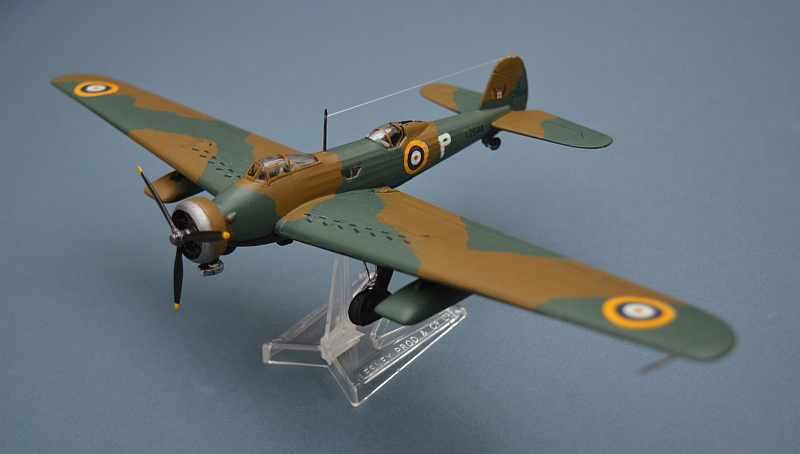
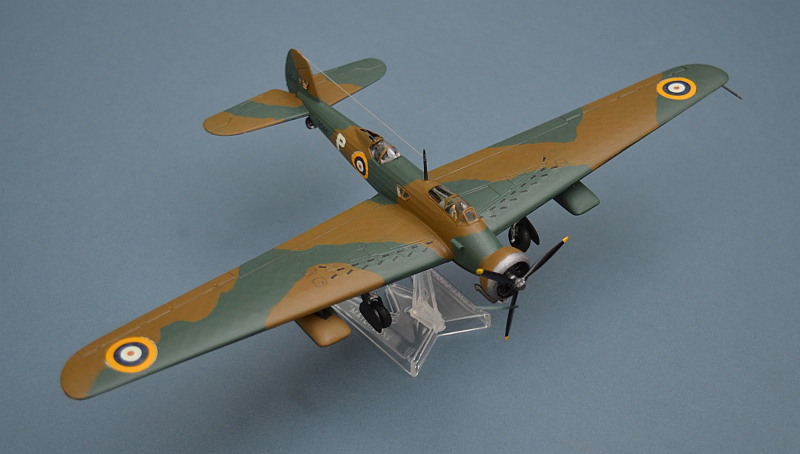
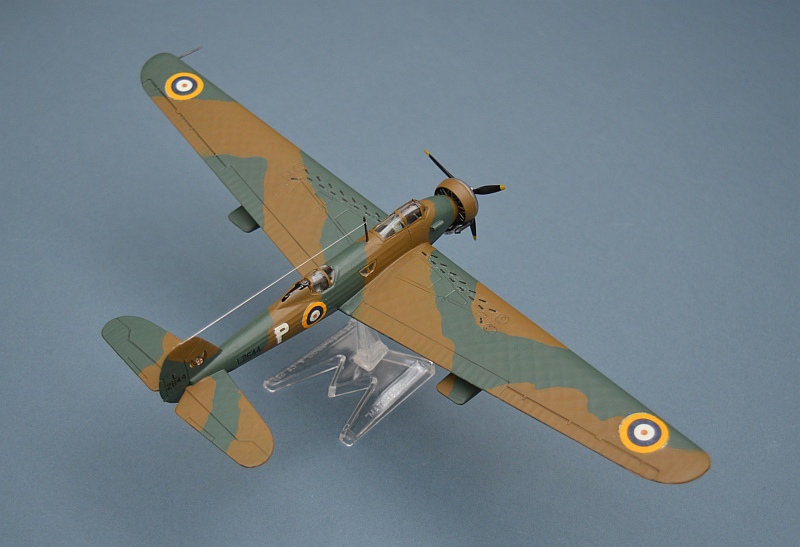
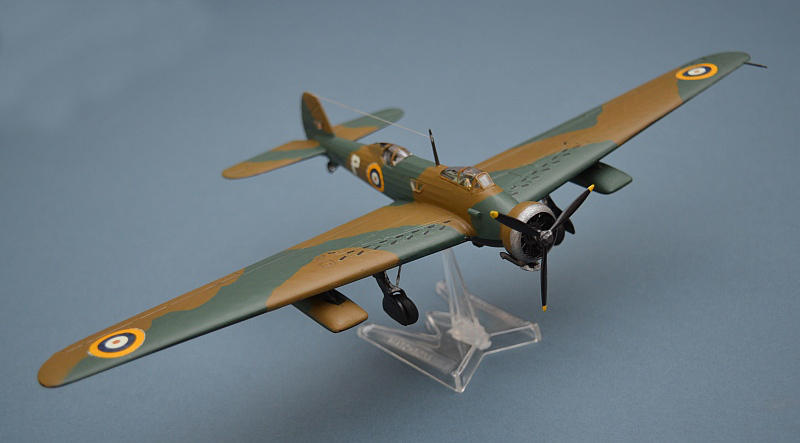

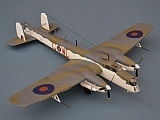
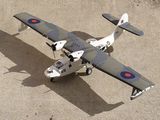

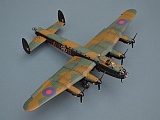

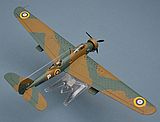

205 Sqn Royal Air Force Coastal Command
RAF Bircham Newton and RAF Gibraltar, 1941.
The Lockheed Hudson was developed from the late 1930s Lockheed Model 14 high speed airliner. With minimal modifications, Lockheed provided the British Purchasing Commission with an armed fast light bomber based on a proven airframe. 200 were ordered immediately, the largest ever order that the small Lockheed company had received up to that date.
Hudsons were mainly employed on maritime patrols with RAF Coastal Command, but also undertook transport and communications roles, including special operations, landing agents and supplies in occupied France. The Canadian, New Zealand and Australian Air Forces also flew significant numbers of Hudsons in similar roles.
Nearly 3,000 were built and they continued in front line roles throughout WW2, seeing much success against Axis submarines and surface ships.
The Airifx Hudson kit was issued in 1963 and is showing its age.
